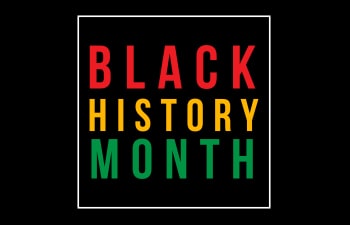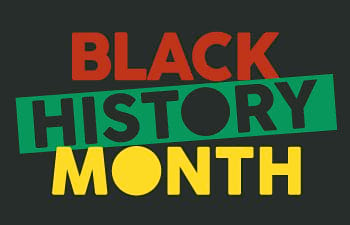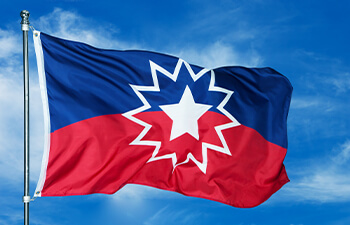Dr. Martin Luther King, Jr.’s activism and powerful speeches have inspired millions. Besides being an exceptional orator, he played a crucial role in significant legislative changes in the United States, including the Civil Rights Act of 1964, the Voting Rights Act of 1965, the Immigration and Nationality Services Act of 1965, and the Fair Housing Act of 1968.
To gain a deeper understanding of this national hero, it is crucial to contextualize his role within the broader spectrum of U.S. history.
The Civil Rights Movement
The Civil Rights Movement took place in the U.S. from 1954-1968. Because African-Americans didn’t have the same rights as white citizens at that time, the goal was to gain equality by ending “lawful” segregation and discrimination. Civil rights activists fought and protested for equal opportunities in education, employment, housing, and the right to vote. Time4Learning students can explore and learn more about the Civil Rights Movement in our social studies courses for middle school and high school.
Martin Luther King, Jr. Facts
- Martin Luther King, Jr. was born on January 15, 1929, in Atlanta, Georgia. He was originally named Michael but later changed it to Martin.
- He earned his Ph.D. in theology from Boston University in 1955. That same year, Dr. Martin Luther King Jr. gained national recognition as a civil rights activist by leading the 385-day Montgomery bus boycott.
- In 1963, Dr. King played a leading role in a march of a quarter-million people to the Lincoln Memorial in Washington, D.C., where he delivered his famous “I Have a Dream” speech.
- Dr. King was jailed nearly 30 times for civil disobedience and false charges. His 1964 “Letter from Birmingham Jail” is a significant primary source in the civil rights movement’s history.
- Dr. King influenced President Lyndon Johnson to sign two landmark acts: the Civil Rights Act of 1964 and the Voting Rights Act of 1965. These legislations effectively ended racial discrimination.
- At the age of 35, Dr. King received the Nobel Peace Prize in 1964 for combating racial inequality through nonviolent resistance. He donated his prize money to the civil rights movement.
- He was assassinated on April 4, 1968, in Memphis, Tennessee.
- The holiday honoring Martin Luther King, Jr. was first observed in 1986 and is celebrated on the third Monday in January. It has been celebrated in all 50 states since the year 2000.
- In 2011, the Martin Luther King, Jr. Memorial opened in Washington, D.C.
MLK’s Role In The Civil Rights Movement
Martin Luther King, Jr joined the Civil Rights Movement in 1955 during the Montgomery bus boycott in Alabama. The boycott lasted over a year until December 1956 when Montgomery desegregated their bus system following legal action against the city ordinance. It all started with the arrest of Rosa Parks, a black woman who refused to give up her seat for a white passenger on a city bus. The local NAACP leader reached out to King to lead the boycott. Dr. King’s Famous “I Have a Dream” Speech
On August 28, 1963, Dr. Martin Luther King Jr. delivered his iconic “I Have a Dream” speech to over 200,000 Americans from all walks of life. Standing at the Lincoln Memorial in Washington, D.C., Dr. King passionately expressed his vision for a future of racial equality and justice. His powerful words continue to inspire people worldwide, reminding us of the ongoing struggle for justice and a more inclusive society. One memorable line from the speech: “I have a dream that my four little children will one day live in a nation where they will not be judged by the color of their skin, but by the content of their character.” These words capture Dr. King’s belief in equality and his commitment to a society where everyone is treated with dignity and respect. Today, we draw inspiration from his remarkable legacy as we strive for a better, more just world.
Non-Violent Protests and Civil Disobedience
In the following years, King continued delivering peaceful speeches, organizing events, and promoting nonviolent protests. Activists boycotted, marched, and conducted sit-ins to protest racial segregation. Despite facing hate and ignorance, King and thousands of other activists persisted, enduring attacks, harassment, violence, and intimidation.
Participate in the National Day of Service
To honor Dr. King’s legacy, involve your family in community service this MLK Day. Encourage your children to participate, teaching them about kindness, civic responsibility. Local organizations offer family-friendly volunteer opportunities like clean-ups, meal distribution, or creating care packages for the homeless. It’s a chance to spend quality time as a family while making a positive impact and keeping Dr. King’s dream alive.
Learning Activities for Martin Luther King, Jr. Day
These activities use multisensory learning and are organized by grade level. This method will help homeschoolers understand Martin Luther King, Jr.’s significant impact on society.
Elementary Martin Luther King, Jr. Activities
- Do you have a small box, plastic eggs, or a cup with a lid at home? Gather letters from a Scrabble™ board or make your own with small pieces of paper. Use these letters to spell out MLK, Jr. vocabulary words: civil, rights, freedom, equality, protest, speech. Put the letters for each word into your container. Let your student shake and pour them out, then unscramble to spell the vocabulary word.
- Every picture tells a story. Find web pictures of Dr. King’s life to inspire your elementary homeschooler. They can write or tell a story based on what they think happened in the picture.
Middle School Martin Luther King, Jr. Activities
- The “What If” game helps students develop problem-solving skills. Apply it to your MLK, Jr. study by asking questions like: What if Martin Luther King, Jr. hadn’t been a minister? Would that have affected how people received his message? Another question could be: What if Dr. King was born in the northern U.S.? Would he have had the same passion for civil rights?
- Using some of the facts they’ve learned about Dr. King, have your middle schooler create an acrostic of the word FREEDOM.
High School Martin Luther King, Jr. Activities
- Ask your student to conduct a historical analysis of the lasting impact of Martin Luther King, Jr.’s work. They can analyze how civil rights advocacy groups used nonviolent resistance techniques to achieve their goals and the importance of the Montgomery Bus Boycott. Time4Learning members can use Time4Learning’s US History II course to further explore the civil rights movement and other important turning points during this time.
- Analogies are ways to compare two different things. Martin Luther King, Jr. uses many of them in his “I Have a Dream” speech. For example, he compares our civil rights to a check. Download a copy of the speech and have your high schooler see how many analogies he or she can discover in it.
Today, Martin Luther King, Jr.’s family carries on his legacy by supporting causes and participating in marches nationwide. Let’s continue celebrating and sharing his life and achievements, empowering new generations to uphold Dr. King’s dream and strive for true equality for all.
Read more about key figures and events in African-American History:










Thank you! We just finished our lesson on Martin Luther King Jr. It is very helpful that you provide the additional resources such as this one.
Hi Amy! Thank you for the positive feedback! Please be certain to follow our blog and our social media channels where we share even more learning resources!
this is awesome history about Martin Luther King THANK YOU.
You are very welcome! We hope you continue to explore and enjoy more of our content!